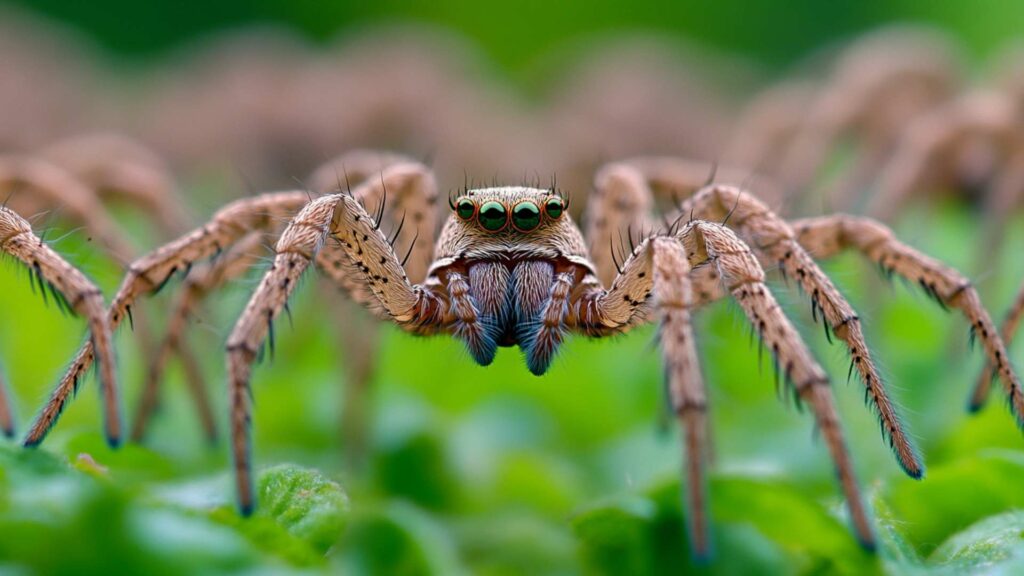
Spiders, those eight-legged creatures often met with fear and aversion, have long been the subject of debate regarding their capacity to feel pain. While some believe that spiders experience suffering when squished, others argue that their simple nervous systems preclude such complex emotions. This article delves into the scientific understanding of spider biology and pain perception, shedding light on the truth behind this intriguing question.
This exploration will examine the structure of a spider’s nervous system, compare it to the human nervous system, and analyze how spiders perceive and respond to touch. We will also discuss the ecological importance of spiders and emphasize the need for empathy and respect towards these fascinating creatures.
Spider Nervous System
Spiders belong to the phylum Arthropoda, which encompasses insects, crustaceans, and other invertebrates. Like all arthropods, spiders possess a decentralized nervous system consisting of a brain and a network of nerve cords running along their bodies. This system is significantly simpler than the centralized nervous system found in vertebrates like humans.
The spider’s brain, located in its cephalothorax (the fused head and thorax region), controls basic functions such as movement, sensory input, and simple learning. However, it lacks the complex structures responsible for processing emotions and pain perception in mammals. The nerve cords branching out from the brain connect to various sensory organs and muscles, allowing spiders to react to stimuli and navigate their environment.
Pain Perception in Invertebrates
Pain, as we understand it, is a complex emotional and physiological response triggered by potentially harmful stimuli. It involves intricate neural pathways that process sensory information, generate feelings of discomfort, and initiate protective behaviors. This sophisticated system requires a highly developed brain capable of integrating sensory input with emotional and cognitive processes.
Invertebrates, including spiders, lack the necessary neural structures for experiencing pain in the same way humans do. While they possess sensory organs to detect touch, pressure, temperature, and chemicals, their responses are primarily reflexive and aimed at avoiding further harm rather than expressing conscious suffering.
Sensory Organs in Spiders
Spiders have evolved a remarkable array of sensory organs to help them survive in their environment. They possess eight eyes that provide limited vision, allowing them to detect movement and light changes. Their legs are covered with sensitive hairs called setae, which detect vibrations and air currents, enabling them to sense prey and potential threats.
Spiders also have chemoreceptors located on their pedipalps (appendages near the mouth) and legs, which allow them to detect chemical cues in their surroundings. These sensory organs provide spiders with crucial information about their environment, guiding their hunting strategies, mate selection, and overall survival.
Reflexive Response to Touch
When a spider is touched or squished, its response is primarily a reflex triggered by the activation of sensory neurons. The nerve impulses travel rapidly through the nervous system, causing muscles to contract and initiate escape behaviors such as withdrawing limbs or spinning silk for protection. This reflexive action is an automatic response designed to minimize potential harm and ensure survival.
There is no evidence to suggest that spiders experience conscious pain or suffering during these reflex responses. Their simple nervous system lacks the capacity for emotional processing associated with pain perception.
Ecological Importance of Spiders
Spiders play a vital role in maintaining healthy ecosystems. As predators, they control populations of insects, including agricultural pests and disease vectors. By consuming vast numbers of insects, spiders contribute to biodiversity and help regulate natural food webs.
Furthermore, spider silk possesses remarkable properties, making it valuable for various applications in medicine, engineering, and materials science. Understanding the ecological importance of spiders highlights the need for conservation efforts and responsible interactions with these fascinating creatures.
Conclusion
The question of whether do spiders feel pain when squished is a complex one that requires careful consideration of scientific evidence. While spiders possess sensory organs to detect touch and pressure, their simple nervous system lacks the structures necessary for experiencing pain as humans do. Their response to being touched or squished is primarily a reflexive action aimed at avoiding further harm rather than conscious suffering.
Understanding this biological difference can help us approach interactions with spiders with greater empathy and respect for their role in the ecosystem. By appreciating their ecological importance and recognizing their unique adaptations, we can foster a more harmonious relationship with these often misunderstood creatures.
